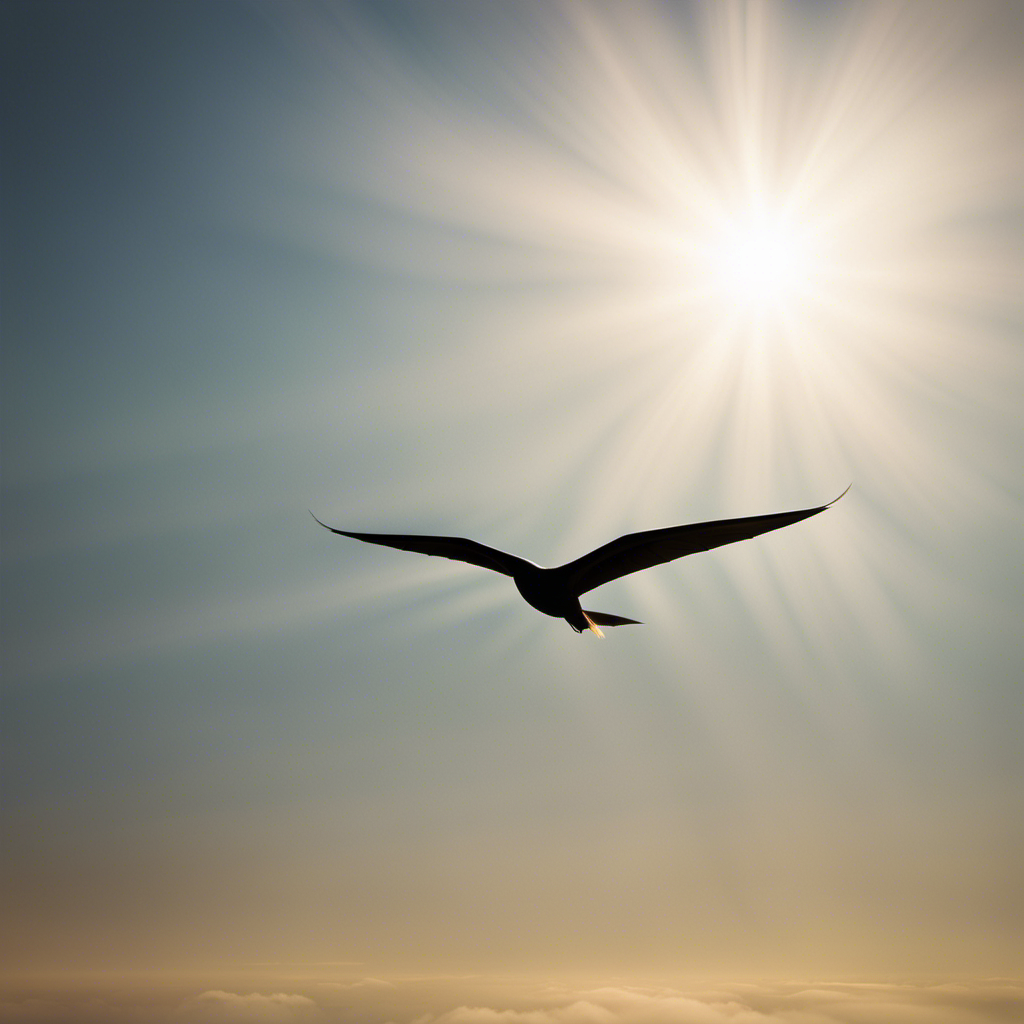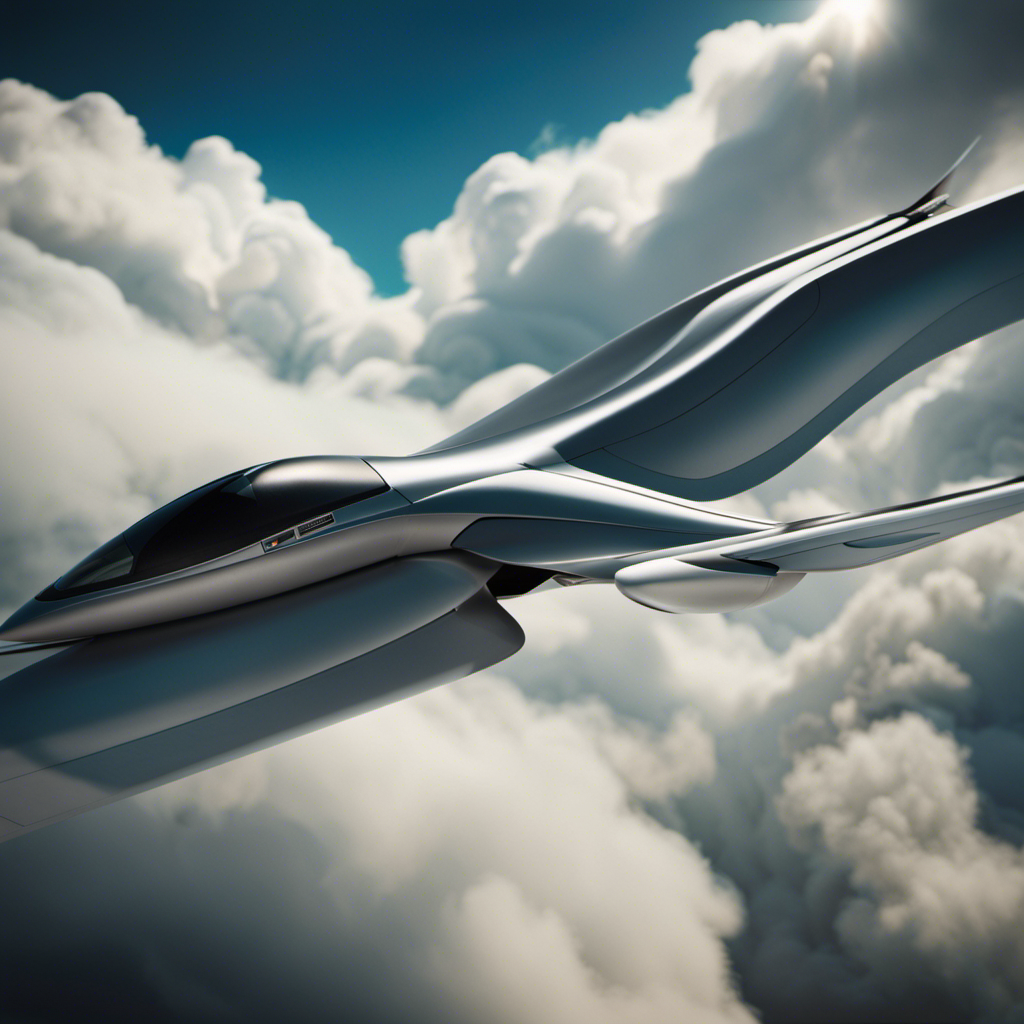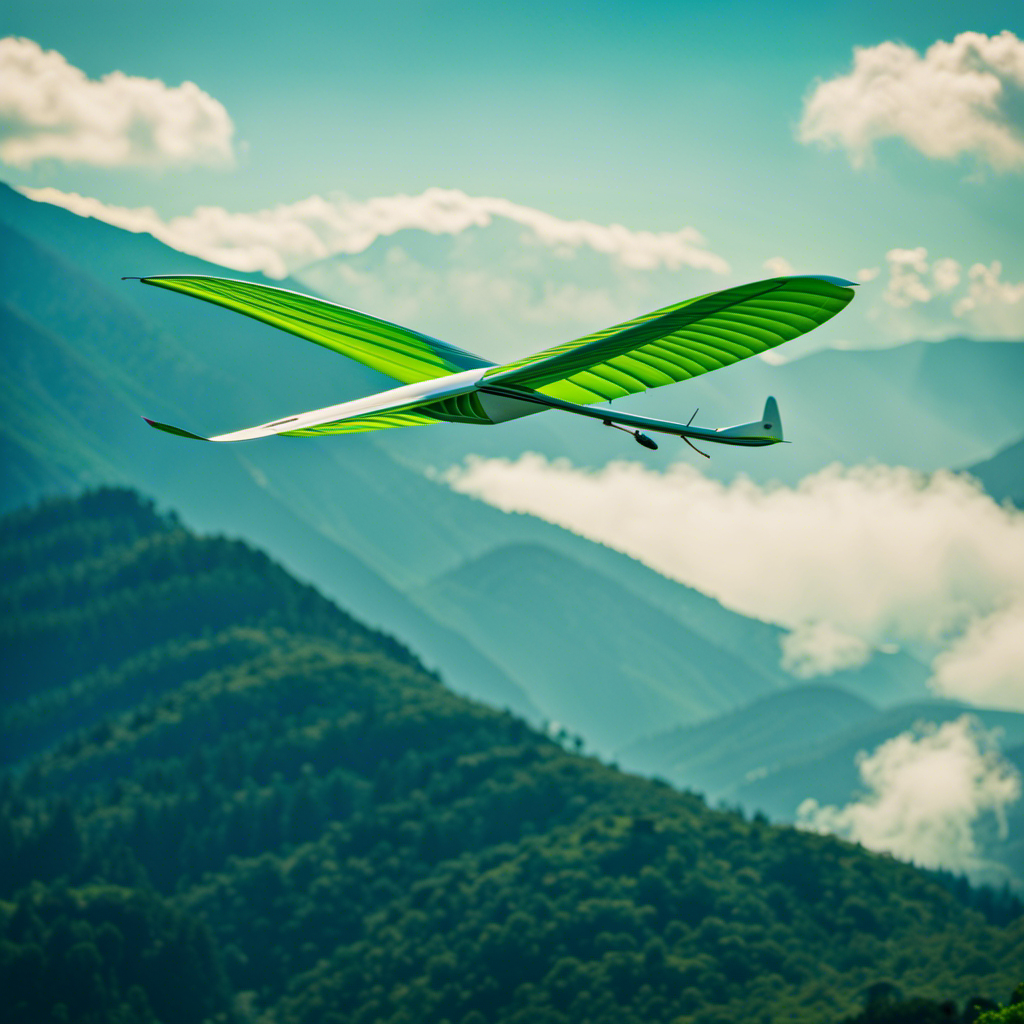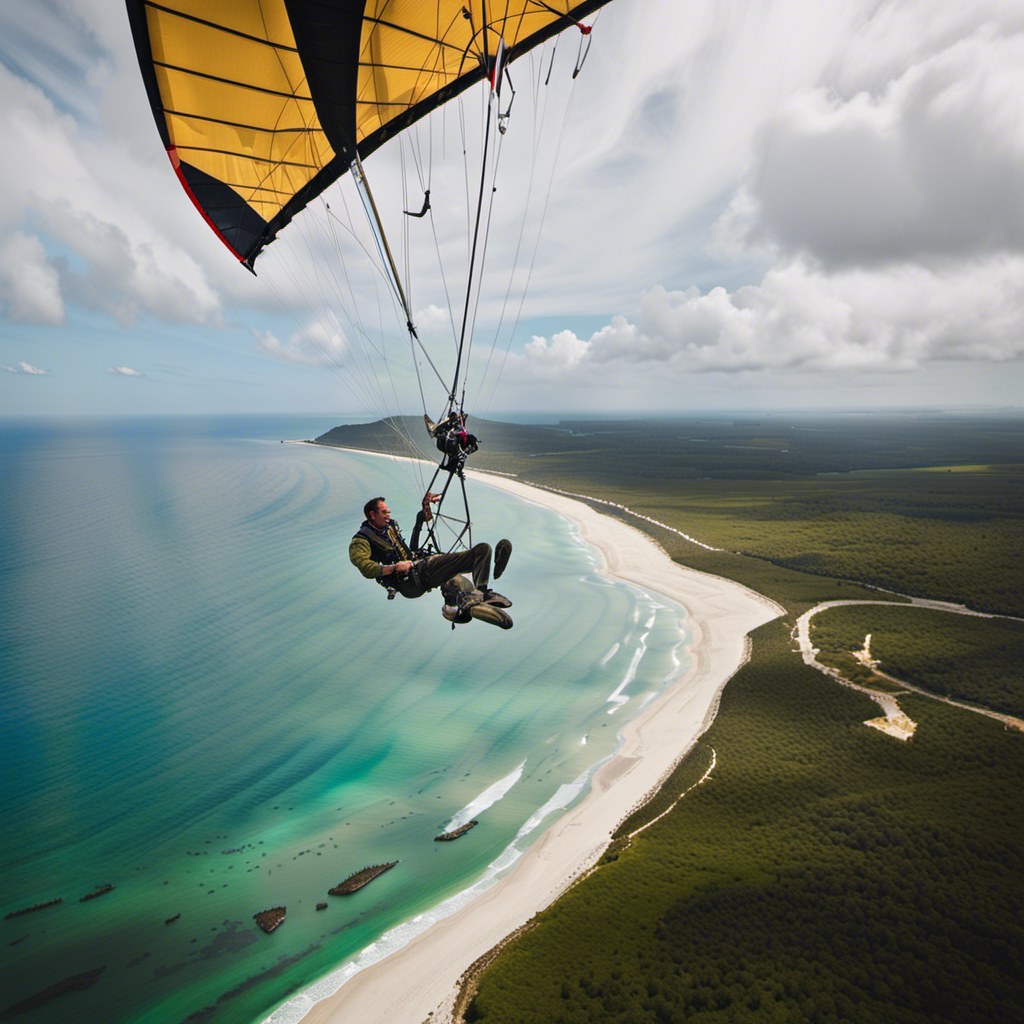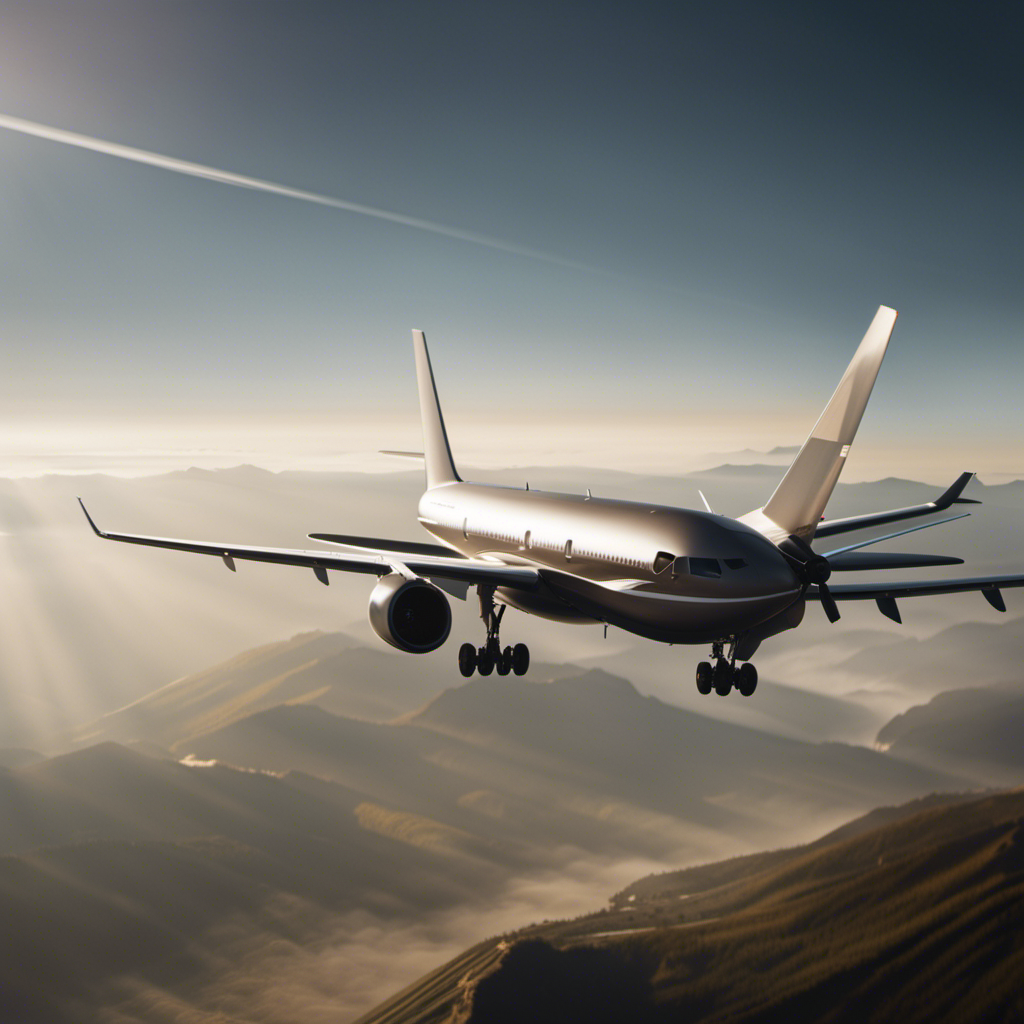As a gliding enthusiast, I have always been fascinated by the incredible capabilities of these aircraft.
Did you know that gliders can stay in the air for hours, covering vast distances without an engine?
In this article, we’ll explore the definition, history, design, and flight principles of gliders.
We’ll delve into the different types of gliders, including soaring and thermal flying techniques.
Additionally, we’ll discuss safety measures, benefits, and training opportunities available for those interested in the world of gliding.
Key Takeaways
- Gliders are lightweight, free-flying aircraft used in hang gliding and paragliding competitions.
- Different launching techniques, such as aerotow and winch launching, are used depending on wind conditions and runway length.
- Soaring and thermal flying techniques, like circling within thermals and ridge soaring, are utilized to extend flight time and cover greater distances.
- Safety measures and regulations are in place to ensure pilot qualifications, pre-flight inspections, flight procedures, and emergency protocols are followed, with rigorous training and certification processes for pilots.
Definition and Basic Principles of Gliders
Gliders are aircraft that you can fly without an engine. They rely on the principles of aerodynamics to stay aloft and maintain flight. The evolution of gliders dates back to the early 19th century when pioneers like Otto Lilienthal and the Wright Brothers experimented with their designs.
Gliders are typically made using lightweight materials like carbon fiber and feature a streamlined construction to reduce drag. There are different types of gliders, including sailplanes, hang gliders, and paragliders, each with their own unique design and launching techniques.
Glider pilots use the technique of soaring to gain altitude and extend their flight time. Safety measures, such as proper training and adherence to regulations, are crucial for a successful gliding experience. Gliding offers a range of benefits, from the thrill of flight to the opportunity to join clubs and access training programs.
Transitioning to the history and evolution of gliders, the early pioneers laid the groundwork for the development of this remarkable aircraft.
The History and Evolution of Gliders
If you want to learn about the history and evolution of gliders, you’ll be fascinated by how these aircraft have developed over time.
Gliding, the art of flying without an engine, has a rich history that spans centuries. From the early experiments of Leonardo da Vinci to the modern advancements in glider design, the evolution of gliders showcases the ingenuity and innovation of aviation enthusiasts.
Technological advancements have played a crucial role in shaping the design of gliders, allowing for greater efficiency and performance. These advancements include improvements in materials, such as lightweight composites, as well as aerodynamic enhancements, like wing profiles and control systems.
As gliders continue to evolve, they become more efficient and capable of achieving longer flight durations and distances.
Transitioning into the subsequent section on the design and construction of gliders, it is important to understand the historical context and technological advancements that have paved the way for the development of these remarkable aircraft.
Design and Construction of Gliders
The design and construction of gliders involves a combination of aerodynamic principles, lightweight materials, and advanced control systems. Construction techniques play a crucial role in ensuring the glider’s strength and stability.
The airframe is typically made of composite materials such as carbon fiber, which offer high strength-to-weight ratios. This allows the glider to be light yet durable.
Aerodynamic principles dictate the shape of the wings, tail, and fuselage, optimizing lift and reducing drag. The wings are designed with a high aspect ratio, allowing for efficient gliding.
Advanced control systems, including spoilers and flaps, enable the pilot to control the glider’s speed, altitude, and direction. These systems work together to create a safe and efficient flying experience.
Transitioning into the next section, let’s explore how gliders achieve flight without an engine.
How Gliders Achieve Flight Without an Engine
One of the key aspects of glider flight is the ability to utilize rising air currents for lift. Glider mechanics and the aerodynamics of gliders play a crucial role in achieving this. Gliders are designed to take advantage of the natural forces and fly without an engine. By understanding the principles of aerodynamics, glider pilots can maximize their flight time and distance.
Glider mechanics involve the study of how gliders generate lift, control their direction, and manage their speed. The wings of a glider are specifically designed to generate lift by creating a pressure difference between the upper and lower surfaces of the wing. This lift force counteracts the weight of the glider, allowing it to stay airborne. To control the direction and speed, gliders use various control surfaces such as ailerons, elevators, and rudders.
Aerodynamics of gliders is the study of how airflow interacts with the glider’s surfaces. The shape and design of the glider’s wings, fuselage, and control surfaces affect its performance. Smooth, streamlined surfaces reduce drag, allowing the glider to maintain its speed and efficiency.
Incorporating a 3 column and 4 row table in markdown format:
| Glider Mechanics | Aerodynamics of Gliders |
|---|---|
| Lift generation | Wing shape and design |
| Control surfaces | Fuselage design |
| Direction control | Streamlined surfaces |
| Speed management | Drag reduction |
Understanding glider mechanics and the aerodynamics of gliders is essential for successful glider flight. By harnessing rising air currents and applying the principles of aerodynamics, glider pilots can achieve sustained flight without the use of an engine. In the next section, we will explore the different types of gliders and their unique characteristics.
Different Types of Gliders
When it comes to gliders, there are three main types that come to mind: sailplanes, hang gliders, and paragliders.
Sailplanes are sleek and efficient, designed for soaring and staying airborne for long periods of time.
Hang gliders, on the other hand, are more basic and rely on the pilot’s body movements to control the glider.
Lastly, paragliders are parachute-like wings that are easy to launch and land, making them a popular choice for recreational flying.
Each type of glider has its own unique characteristics and advantages, catering to different preferences and skill levels of pilots.
Sailplanes
Sailplanes, also known as gliders, are aircraft that are designed to fly without an engine. These sleek and graceful aircraft rely solely on the forces of nature to stay aloft. Sailplane competitions showcase the mastery of glider aerodynamics, where pilots demonstrate their skills in distance, speed, and accuracy. Understanding the principles of glider aerodynamics is crucial in achieving optimal performance. The table below illustrates key aspects of sailplane design and how they contribute to their flight characteristics:
| Aspect | Description | Purpose |
|---|---|---|
| Wing Shape | Curved upper surface, flat bottom | Generate lift |
| Aspect Ratio | Ratio of wing span to chord length | Enhance glide ratio |
| Wing Loading | Weight of the aircraft per unit area | Determine stall speed |
| Control Surfaces | Ailerons, elevator, rudder | Control roll, pitch, and yaw |
Transitioning into the subsequent section about hang gliders, it is important to note that these aircraft differ from sailplanes in terms of design and operation.
Hang Gliders
To experience the thrill of flying through the air, you can try hang gliding, which offers a unique and exhilarating way to soar through the sky. Hang gliders are lightweight aircraft that rely on the pilot’s body movements to control their flight.
Here are some key points about hang gliders:
-
Hang glider safety:
-
Safety is of utmost importance when it comes to hang gliding.
-
Pilots should undergo proper training and always follow safety protocols.
-
Regular maintenance and inspections of the equipment are essential for safe flights.
-
Hang glider competitions:
-
Hang gliding competitions showcase the skill and precision of pilots.
-
Competitors demonstrate their ability to navigate through predetermined courses.
-
These events serve as a platform for pilots to exchange knowledge and improve their skills.
Hang gliders provide an incredible experience of gliding through the air, but they are not the only type of glider available. Paragliders, for instance, offer a different approach to gliding.
Paragliders
If you’re looking for a different way to experience the thrill of gliding through the air, paragliding offers a unique and exciting option.
Paragliding is a type of gliding that involves flying a lightweight, free-flying aircraft called a paraglider. Paragliders are made up of a wing-like canopy, which is formed by a number of interconnected cells that are filled with air. This canopy is attached to the pilot by a harness, allowing them to control the direction and speed of the flight.
Paragliding equipment includes the paraglider itself, as well as a reserve parachute for safety, a helmet, and a variometer to measure altitude and climb rates. Paragliding competitions are held worldwide, where pilots compete based on their skills in navigation, speed, and accuracy.
Now, let’s move on to the launching techniques for gliders.
Launching Techniques for Gliders
Launching gliders requires the use of various techniques such as aerotow, winch launching, and auto-tow. These launching methods are designed to utilize the principles of aerodynamics to get the glider off the ground and into the air.
Aerotow involves a powered aircraft towing the glider into the air using a long towline, while winch launching uses a powerful winch to rapidly unwind a cable and launch the glider. Auto-tow, on the other hand, uses a self-launching glider that has its own engine to climb to the desired altitude.
Each of these techniques has its own advantages and considerations, depending on factors such as wind conditions and runway length.
Now, let’s explore the next phase of glider flight: soaring and thermal flying.
Soaring and Thermal Flying
Soaring and thermal flying allow pilots to take advantage of rising air currents to extend their flight time and cover greater distances. To make the most of these techniques, pilots must be skilled in reading the sky and understanding how thermals and lift work.
Here are some key techniques used in soaring:
- Circling: Pilots circle within thermals to gain altitude and stay within the rising air current.
- Cloud streets: These long, linear cloud formations indicate the presence of thermals and can be followed to find lift.
- Ridge soaring: Pilots fly along the ridge of a mountain or hill, using the upward wind created by the terrain to stay airborne.
- Wave soaring: In certain weather conditions, waves of air can form above mountains, providing lift for gliders.
By employing these techniques, pilots can stay aloft for hours and travel great distances.
However, it is important to ensure safety while enjoying the thrill of soaring through the skies. Transitioning to the subsequent section, let’s now explore the safety measures and regulations for glider flight.
Safety Measures and Regulations for Glider Flight
To ensure the safety of pilots and other aircraft, there are specific regulations and safety measures in place for glider flight. Safety regulations for glider flight are designed to minimize risks and prevent accidents. These regulations cover various aspects of glider operation, including pilot qualifications, pre-flight inspections, flight procedures, and emergency protocols.
Pilots must undergo rigorous training and certification processes to ensure they have the knowledge and skills necessary for safe glider flight. Glider flight procedures involve meticulous planning and adherence to established protocols. This includes assessing weather conditions, conducting pre-flight checks, and following specific flight routes.
Emergency procedures are also essential, ensuring pilots can handle unexpected situations and make informed decisions to protect themselves and others. By adhering to these safety regulations and procedures, the risks associated with glider flight can be minimized, allowing pilots to enjoy the benefits and advantages of gliding.
Benefits and Advantages of Gliding
After discussing the safety measures and regulations for glider flight, it is important to explore the benefits and advantages of this exhilarating activity.
Gliding offers numerous advantages compared to other forms of aviation. Firstly, gliders are cost-effective, as they don’t require fuel and have lower maintenance costs. Additionally, gliders have the advantage of being environmentally friendly, as they produce zero emissions during flight.
Furthermore, gliding provides a unique sense of freedom and tranquility, allowing pilots to experience the beauty of soaring through the sky without the noise and distractions of an engine. The ability to stay aloft for extended periods also enables glider pilots to explore vast distances and discover new landscapes.
These benefits make gliding an attractive and rewarding activity for aviation enthusiasts. Transitioning into the subsequent section about gliding clubs and training opportunities, it is important to consider the resources available for individuals interested in pursuing this thrilling sport.
Gliding Clubs and Training Opportunities
Exploring the world of gliding clubs and training opportunities can provide individuals with an exciting pathway into the world of aviation. Gliding clubs offer a range of benefits and experiences for aspiring pilots, including access to state-of-the-art gliders and equipment, expert instruction from experienced glider pilots, and opportunities to participate in gliding competitions, showcasing skills and testing abilities against other pilots. Additionally, gliding clubs provide the chance to learn and master glider aerobatics, performing thrilling maneuvers such as loops, rolls, and spins. Moreover, joining a gliding club allows individuals to network and build camaraderie with fellow aviation enthusiasts, fostering connections and friendships within the gliding community.
Frequently Asked Questions
What are the main safety precautions to consider when flying a glider?
When flying a glider, it is crucial to prioritize safety by ensuring that safety equipment is properly utilized. Additionally, thorough consideration of weather conditions is necessary to mitigate any potential risks during the flight.
Can gliders fly at night?
Glider navigation is a challenging task during night flying. Only 2% of glider pilots are certified for night operations due to the increased risks and complexity involved in flying without visual references.
How long can a glider stay in the air without any external assistance?
A glider can stay in the air without any external assistance for several hours, depending on the weather conditions and the skill of the pilot. Glider endurance and flight duration can vary greatly.
Are there any limitations on where gliders can fly?
Glider flight regulations strictly govern where gliders can fly. Geographical restrictions, such as airspace classifications and controlled areas, are in place to ensure the safety of glider pilots and other aircraft.
What are the requirements to become a certified glider pilot?
To become a certified glider pilot, you must meet certain requirements set by the aviation authority. These requirements typically include a minimum age, medical fitness, flight training, written exams, and a practical test. Certification ensures the pilot’s competence and safety in operating gliders.
Conclusion
In conclusion, gliding is a captivating and captivating aviation activity that allows pilots to gracefully glide through the sky without the use of an engine. The art of gliding requires a deep understanding of aerodynamics and skillful piloting techniques.
Gliders come in various types and are meticulously designed and constructed to maximize performance and efficiency. Soaring and thermal flying are exhilarating aspects of gliding that enable pilots to harness the power of nature.
Gliding offers numerous benefits and advantages, including cost-effective flying and a strong sense of freedom. Safety measures and regulations ensure the well-being of glider pilots. Gliding clubs and training opportunities provide a supportive and educational environment for aspiring glider pilots.
Embark on this extraordinary aviation journey and experience the tranquility and thrill of gliding.
With a heart that soars as high as the skies, Aria, affectionately known as “Skylark,” is the driving force behind Soaring Skyways. Her journey into the gliding world began as a young dreamer gazing up at the soaring birds, yearning to experience the weightlessness and freedom they embodied. With years of experience both in the cockpit and behind the scenes, Aria’s commitment to the gliding community is unwavering.
